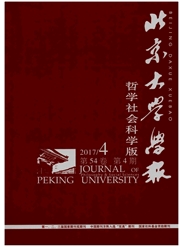

 中文摘要:
中文摘要:
本次实验录制了一位发音人正常说话和发嗲时的声音样本,用声学分析的方法描述并总结了发嗲话语的调音特征,并用超声检测获得的图像数据进行生理参数上的验证,得到如下结论:发嗲时,发音人的前三个共振峰都会有所抬升;其中F2显著偏高,即发音时声腔收紧点前移,后腔拉长;低元音的舌位显著下降,而高元音则仍保持较为紧张的状态,开口度变化不明显;综合以上两点,发嗲时/a/、/i/、/u/所围成的舌高点的范围向下扩大,向前偏移;F3的分布较为分散,但也有显著的抬升。最后我们结合前人的研究浅析了发嗲的音质特点形成的原因,发嗲的音质与儿童的音质特征十分接近,因此我们认为发嗲很可能源于人的退行心理,即在言语上扮演弱者来获得同情和帮助,具体表现为发音的女性化、儿童化。
 英文摘要:
英文摘要:
This study recorded a speaker' s normal and "dearing" sound, then described articulation characteristics of dearing speech by acoustic analysis and proved them physiologically with the pictures from ultrasound testing. The following conclusions could be made. When making dearing speech, the speaker' s first three formants all rise; from which F2 rises remarkably, meaning that the constriction has moved forwards, yielding a longer L1; The tongue position goes much lower pronouncing low vowels, while barely goes higher pronouncing high vowels. According to above, the acoustic vowel space defined by dearing /a/ /i/ /u/ widens downwards and deviates forwards. The dis- tribution of F3 is more dispersed but also rises obviously. The reason for these articulation characteristics of dearing is analyzed, The quality of dearing is similar to that of children' s speech, so "dearing" may be due to the psychology of "regression" , which means to perform like a weaker to gain sympathy and help by speaking feminizedly and chil- drenizedly.
 同期刊论文项目
同期刊论文项目
 同项目期刊论文
同项目期刊论文
 期刊信息
期刊信息
